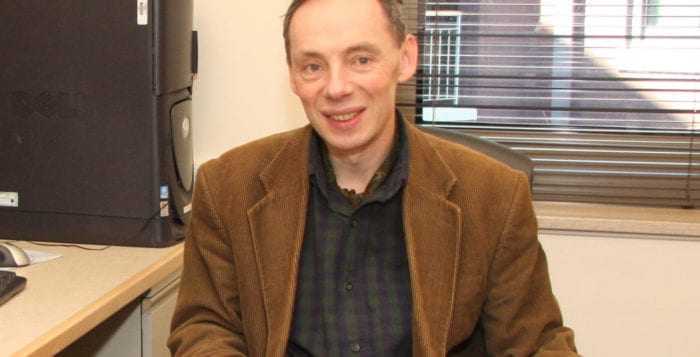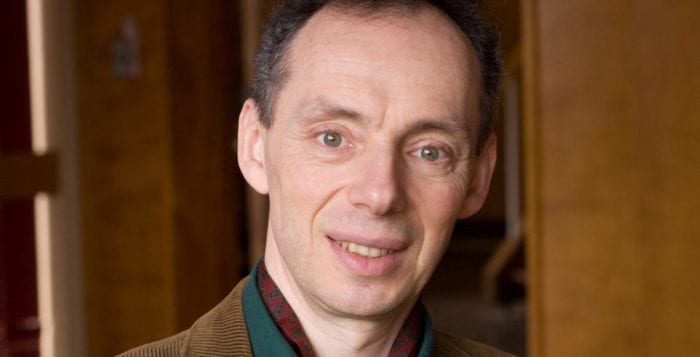By Daniel Dunaief
Seeing into the future is one of the most challenging, and potentially rewarding, elements of studying cancer. How, scientists and doctors want to know, can they take what evidence they have —through a collection of physical signs and molecular signatures — and determine what will be?
Researchers working on a range of cancers have come up with markers to divide specific types of cancers to suggest the likely course of a disease.
With prostate cancer, the medical community uses a combination of the prostate-specific antigen (PSA), magnetic resonance imagining (MRI) and biopsy results, which are summarized as the Gleason score, to diagnose the likely outcome of the disease. This analysis offers probable courses for developing symptoms.
Cold Spring Harbor Laboratory Professor Michael Wigler and Associate Professor Alexander Krasnitz recently published an article in the journal Cancer Research of a promising study of eight patients that suggests a way of using molecular signatures to determine whether a prostate is likely to contain cells that will threaten a patient’s health or whether the cells are in a quieter phase.
The third most common cancer among Americans, prostate cancer kills an average of 21,000 men each year. Doctors and their patients face difficult decisions after a prostate cancer diagnosis.
“A major challenge is to determine which prostate cancers have aggressive potential and therefore merit treatment,” Herbert Lepor, a professor and Maritin Spatz Chair of Urology at the NYU Langone Medical Center School of Medicine, explained in an email. A collaborator on the study, Lepor provided a clinical perspective and shared patient samples.
A conversation with a doctor after such a diagnosis may include a discussion about how the cancer is not likely to pose an immediate risk to a patient’s life, Krasnitz explained. In that case, doctors do not recommend surgery, which might cause other problems, such as incontinence.
Doctors typically recommend active surveillance to monitor the disease for signs of progression. Some patients, however, make their own decisions, electing to have surgery. The Gleason score, which is typically 3, 4 or 5, can’t provide “meaningful information regarding aggressiveness of the disease,” Lepor explained. “The unique genetic profile of a cancer cell should have infinite more prognostic capability.”
Wigler and Krasnitz, who have been collaborating since Krasnitz arrived at CSHL in 2005, use several hundred single cells from biopsy cores. The research group, which Krasnitz described as a large team including research investigator Joan Alexander and computational science manager Jude Kendall, look for cells with a profile that contains the same irregularities.
“If you take two cells and their irregularities are highly coincident, then perhaps these two cells are sisters or cousins,” Krasnitz explained in an email. “If they are less coincident, then the two cells are more like very distant relatives. We looked for, and sometimes found, multiple cells with many coincident irregularities. This was our evidence for a clonal population.”
By looking at how many biopsy cores contain clonal cells, and then determining how far these clonal cells have spread out through the prostate, the researchers gave these patient samples a score. In this group, these scores, determined before any intervention, closely tracked a detailed analysis after surgery.
“We get a high correlation” between their new score and a more definitive diagnosis that comes after surgery, Krasnitz said. “Our molecular score follows the final verdict from the pathology more closely than the pathological score at diagnosis from the biopsy.”
Wigler, Krasnitz, Lepor and other researchers plan to continue to expand their work at Langone to explore the connection between their score and the course of the disease. Lepor explained that he has been collaborating with Wigler and Krasnitz for five years and suggested this is “an exceptional opportunity since it bridges one of the strongest clinical programs with a strong interest in science (NYU Urology) and a world-class research program interested in clinical care (CSHL).
The research team has submitted a grant to the National Institutes of Health and hopes to expand their studies and provide “compelling evidence” that single-cell genomic mapping “will provide an unmet need defining aggressiveness of prostate cancers,” Lepor said.
While Krasnitz is encouraged by the results so far, he said the team has work ahead of them to turn this kind of analysis into a diagnostic tool physicians can use with their patients.
Realistically, it could take another five years before this score contributes to clinical decision-making, Krasnitz predicted. “You can’t do it overnight,” he cautioned. When this test offers specific signals about the likely outcome for a patient, a researcher would likely need to wait several years as the patient goes on active surveillance to see whether the score has predictive value for the disease in a larger population.
Krasnitz has a sense of urgency to produce such a test because there is “no point in delaying something that potentially looks promising and that one day might well be a part of a clinical practice.”
The work that led to their article took three or four years to complete. The study required technical improvements in the way the researchers processed DNA from single cells. They also had to develop algorithmic improvements that allowed them to use copy number variation to determine clonal structure. The scientists tapped into a wealth of information they gained by taking cells from several locations within the prostate.
Krasnitz was born in Kiev, now part of the Ukraine, and grew up in the former Soviet Union. A resident of Huntington, he lives with his wife Lea, who produces documentaries, including “Maria — The Russian Empress” on Dagmar of Denmark, who was also known as Maria, mother of Nicholas II, the last Romanov czar who was overthrown in 1917. As for his work with Wigler, Krasnitz is excited about the possibilities. “It’s very encouraging,” he said. “We look forward to a continuation of this.”






